The Strange Parallels Between Fontainebleau and a Bygone Vegas Casino
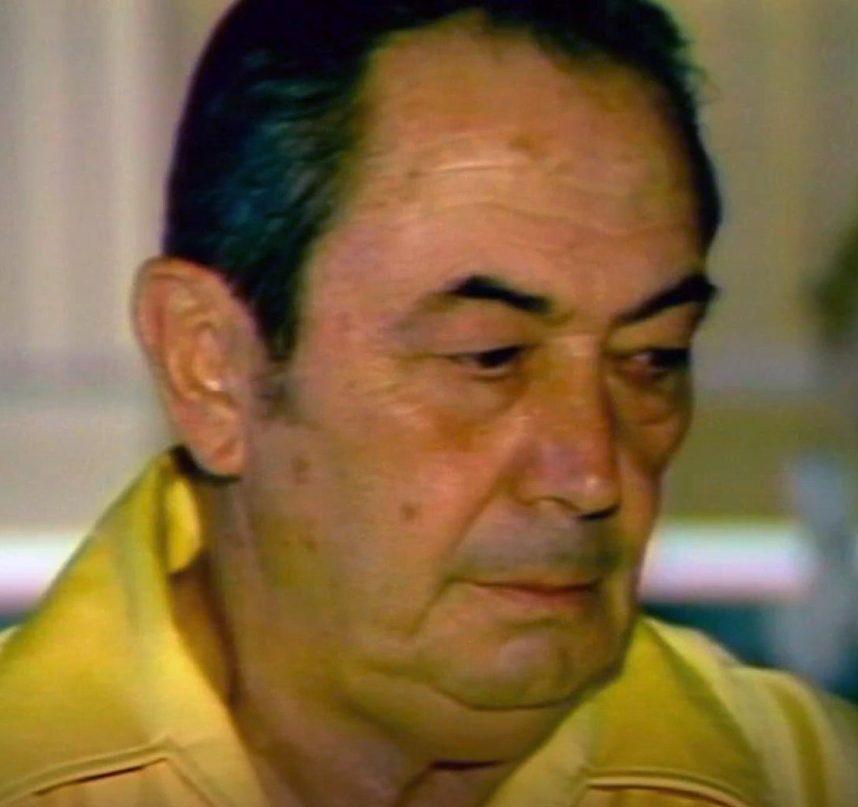
Posted on: December 19, 2023, 02:17h.
Last updated on: December 19, 2023, 04:12h.
Some interesting and uncanny parallels exist between the rocky origin story of the brand-new Fontainebleau and another Las Vegas casino resort that opened 54 years earlier, only a block away.
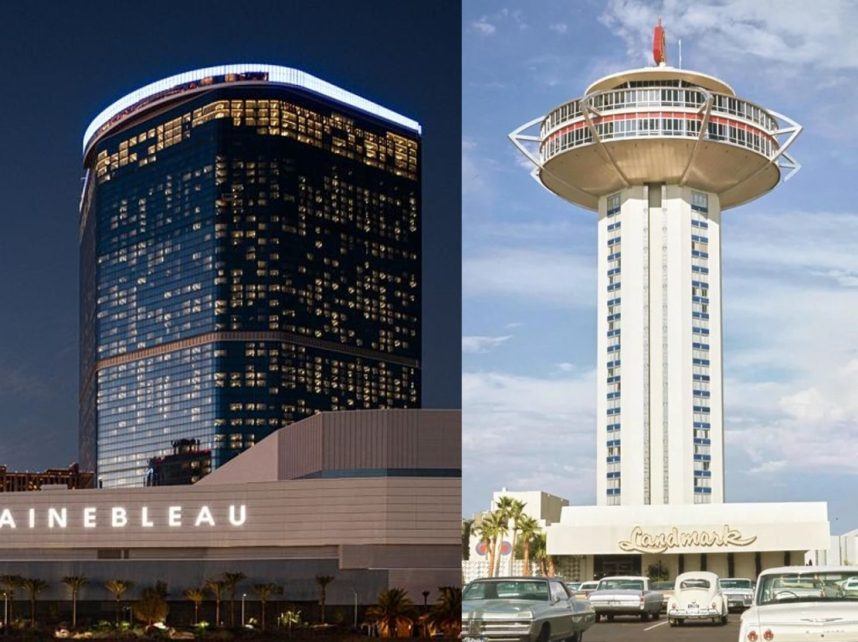
Tall Orders
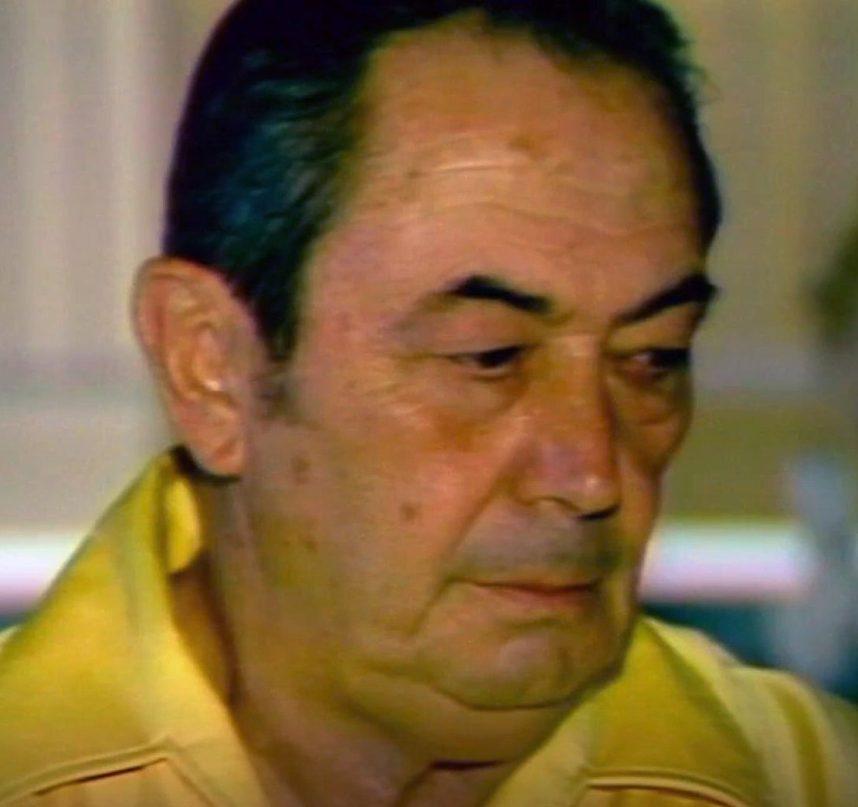
In 1961, when Frank Caroll, a building developer from Kansas City, was considering what to do with the several acres of former Las Vegas Park horse track property he had purchased east of the Strip and across from the Las Vegas Convention Center, he hit upon the idea of giving Sin City its own Space Needle.
Construction on the future Seattle landmark had just broken ground on April 17 of that year and was very much in the news. (And no, the Stratosphere, which didn’t open until 1996, wasn’t the first Las Vegas Space Needle.)
Caroll began building what he named the Landmark that September, setting early 1963 as its opening date. But financing problems stopped his cranes in December 1962. The $3M loaned Caroll by the Appliance Buyers Credit Corporation (ABCC), a subsidiary of RCA-Whirlpool, was all gone. ABCC not only refused to extend his credit, it alleged that Caroll had defaulted on his payments.
For six years, the already topped-off structure would stand, 80% complete, as the tallest building in Nevada, and as its biggest eyesore.
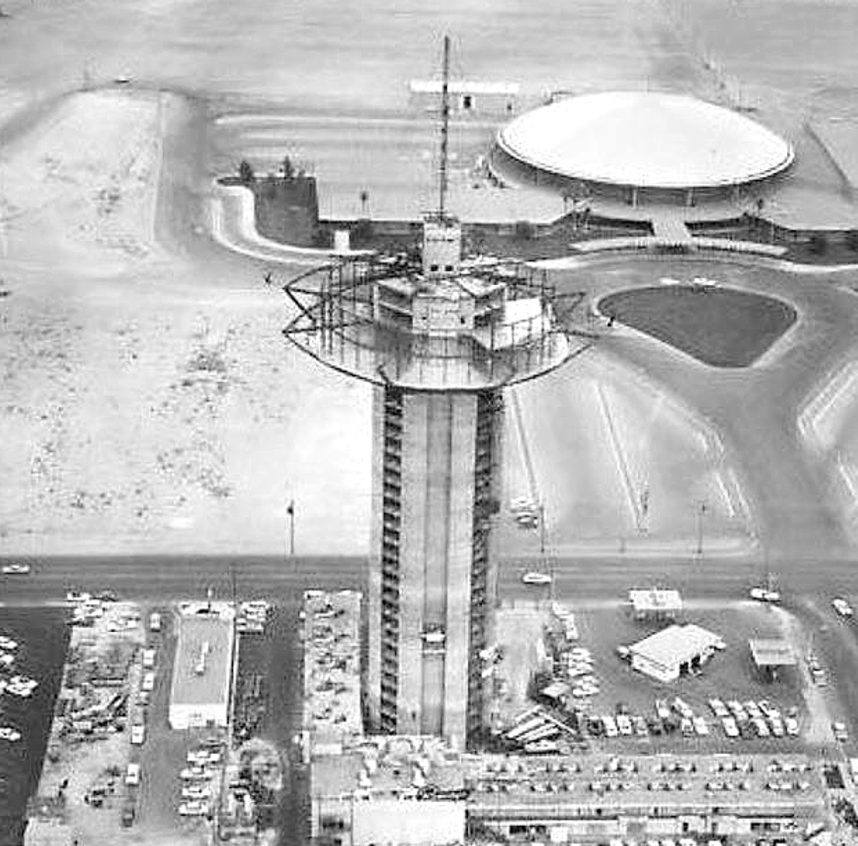
Sounding Familiar Yet?
In 1966, the Teamsters Pension Fund floated a $5.5M construction loan to finish the Landmark, with ownership transferred to a group of investors that included Caroll and his wife. Construction restarted in September of that year, with a new projected completion date of early 1967.
By April 5, 1968, the Landmark was declared complete and the media was invited inside for a preview tour. During the event, however, Caroll physically attacked the property’s interior designer, Leonard England, whom he accused of flirting with his wife.
Caroll was arrested for the incident two weeks later. Three weeks after that, he withdrew his request for a gaming license and placed the Landmark up for sale.
In May 1968, the Teamsters Pension Fund filed a notice of breach on the trust deed, claiming it hadn’t received loan payments since October 1967.
The Landmark filed a petition to declare bankruptcy on Aug. 29, 1968.
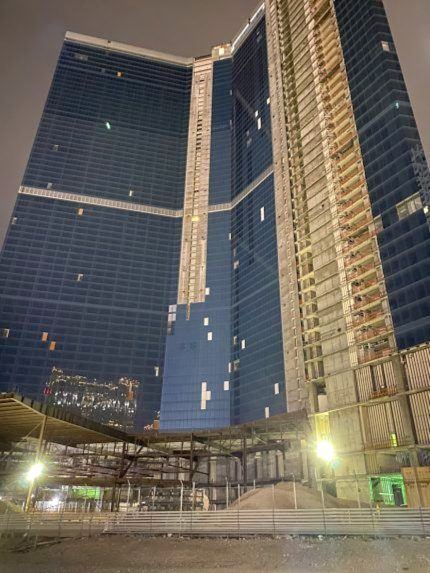
Bleau Also in the Red
Construction on Fontainebleau Las Vegas began in 2007 on the plot first occupied by the Thunderbird Hotel and Casino in 1948. Its owners, led by Jeffrey Soffer, planned to open it as a sister property to their Miami resort in October 2009.
But the Great Recession had other plans. A year after the resort’s 68-story tower was topped off in 2007, lenders Bank of America and JP Morgan Chase got so spooked by the economic outlook that they canceled their $770M in funding, and the $2.8B project went bankrupt.
For most of 2009 through 2017, the structure stood only 70% complete, an unwanted and humiliating monument to economic ruin.
Yes, This Definitely Sounds Familiar
Billionaire investor Carl Icahn saw economic opportunity in economic hardship, as billionaires often do. He bought the building in a 2010 bankruptcy auction for $150M and didn’t do a single thing to it for seven years. In 2017, he sold it to property developer Steven Witkoff and an investment firm called New Valley for $600M, four times what he paid.
Witkoff began redeveloping the unfinished casino resort, which he renamed The Drew Las Vegas in honor of his son Andrew Witkoff, who died of a drug overdose in 2011.
Construction was halted again in March 2020, as the COVID-19 pandemic forced the shutdown of businesses in Las Vegas. At the time, Witkoff was close to finalizing a $2 billion construction loan, which never came through.
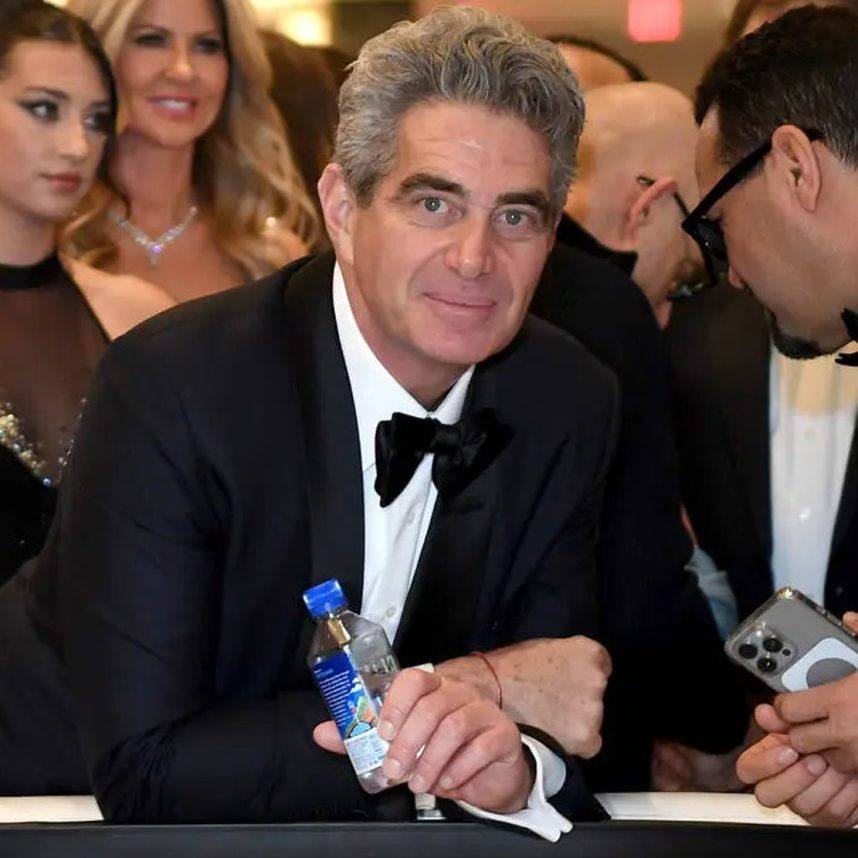
Parallel Happy Endings, Too
Howard Hughes became the savior of the Landmark. On Oct. 23, 1968, he purchased the vacant property for $17.3M, which included $8.9M owed to the Teamsters and $8.3M. It was the sixth and final Vegas casino purchased by the eccentric billionaire during a spree that started with the Desert Inn in 1966.
Hughes spent an additional $3M to finish it to his specifications.
The Landmark opened July 1, 1969, and lasted until 1990, following a 1985 bankruptcy it could never recover from. The Las Vegas Convention and Visitors Authority purchased the property for $15M in September 1993, then demolished it in 1995 to add a 2K-space parking lot to its convention center, which is now the center’s West Hall.
Footage of the Landmark’s implosion is part of pop-cultural history, as it was filmed by director Tim Burton and included in his 1996 movie, Mars Attacks.
The Fontainebleau’s happy ending is much more heartwarming since its savior was its original owner. In a stunning turn of events, the project was reacquired by Soffer in 2021 for $650M through his company, Fontainebleau Development, in partnership with Koch Real Estate Investments. They agreed to take on Witkoff’s debt to avoid foreclosure, and the project re-hewed to its original construction plans.
Fontainebleau Las Vegas opened to the public at 12:01 a.m. on Dec. 14, 2023.
Source: casino.org
